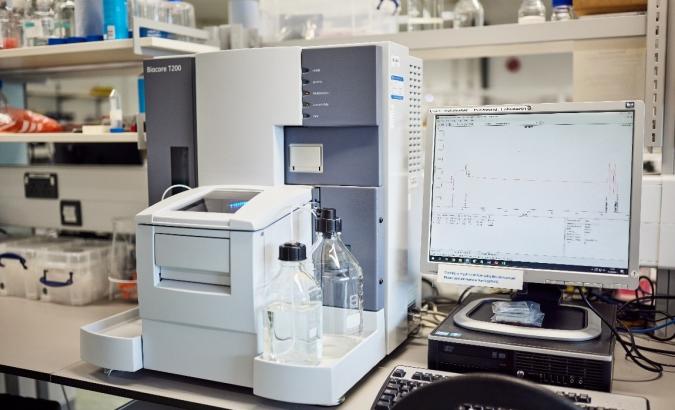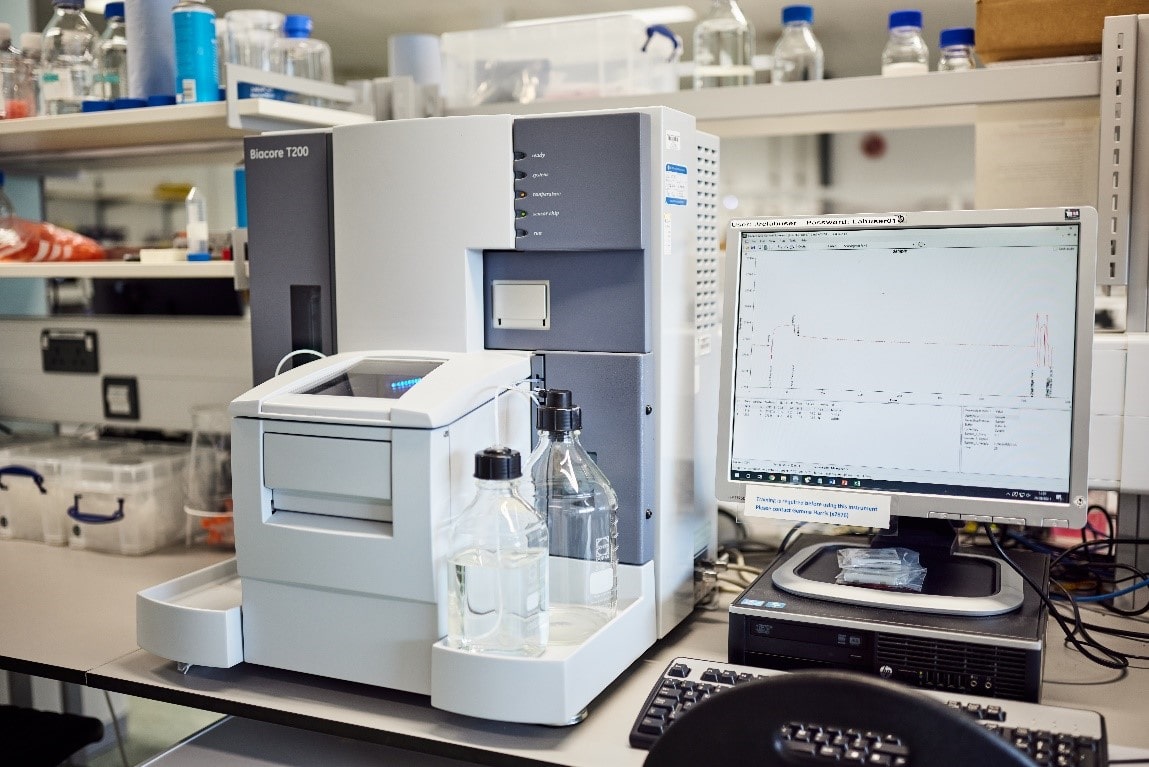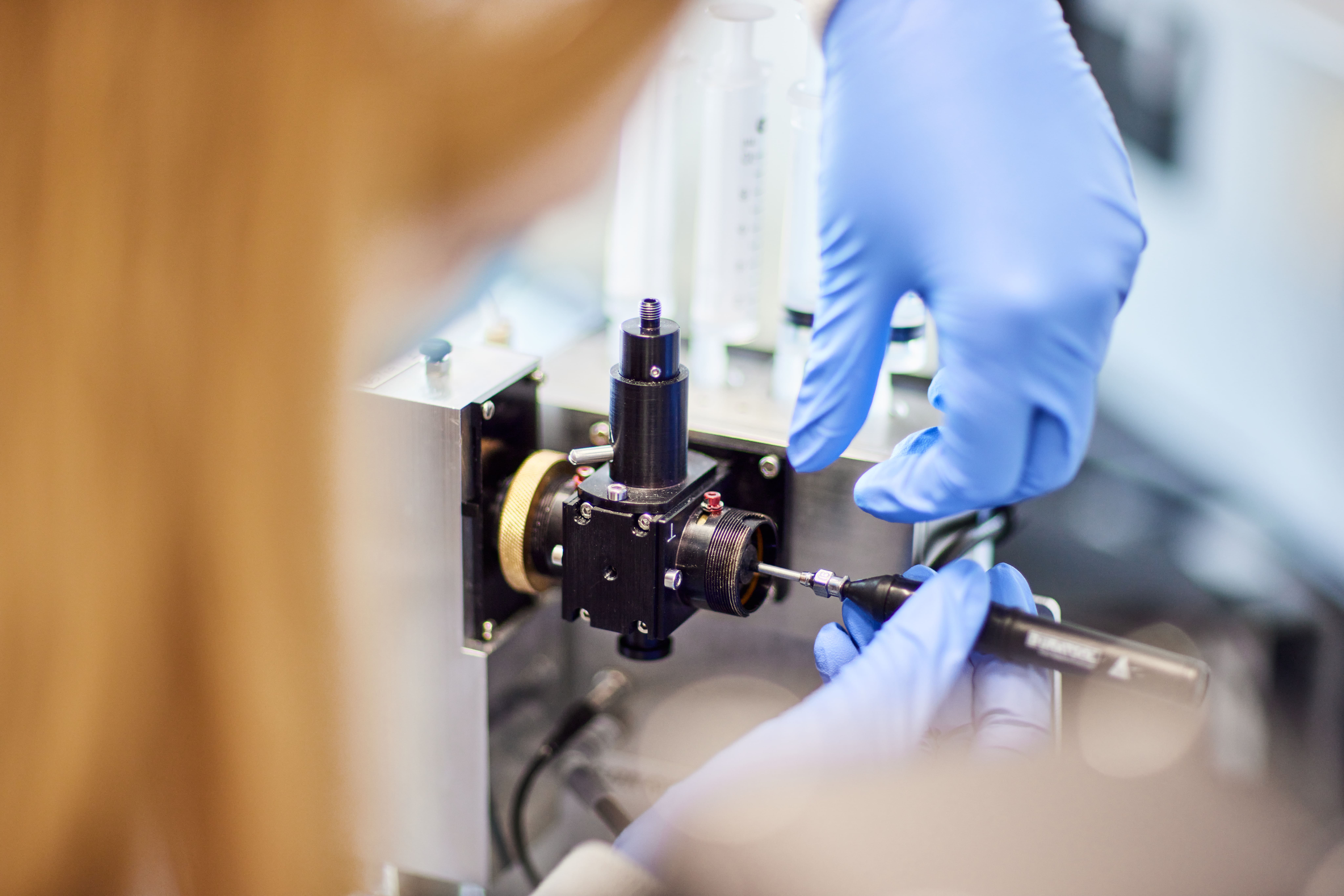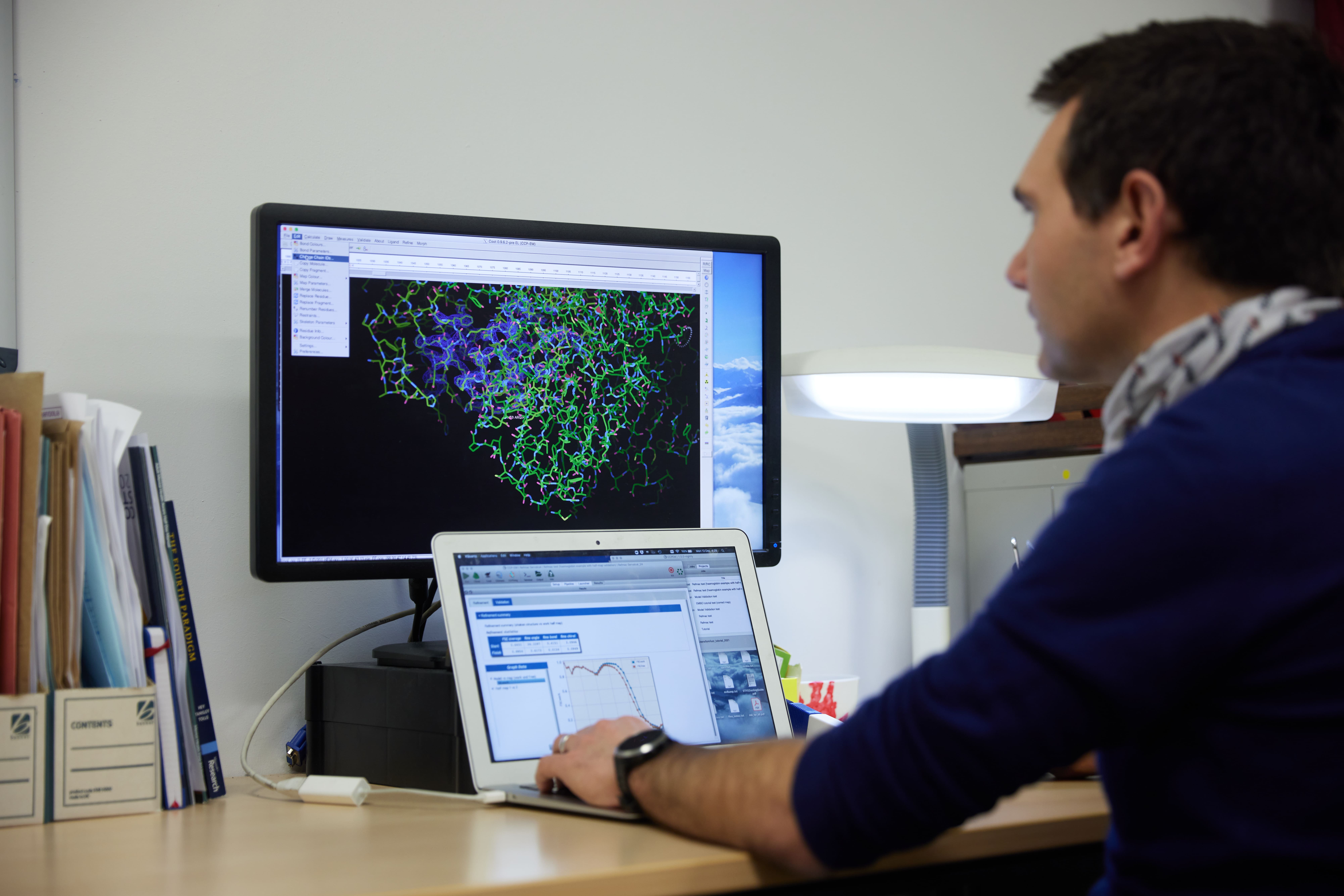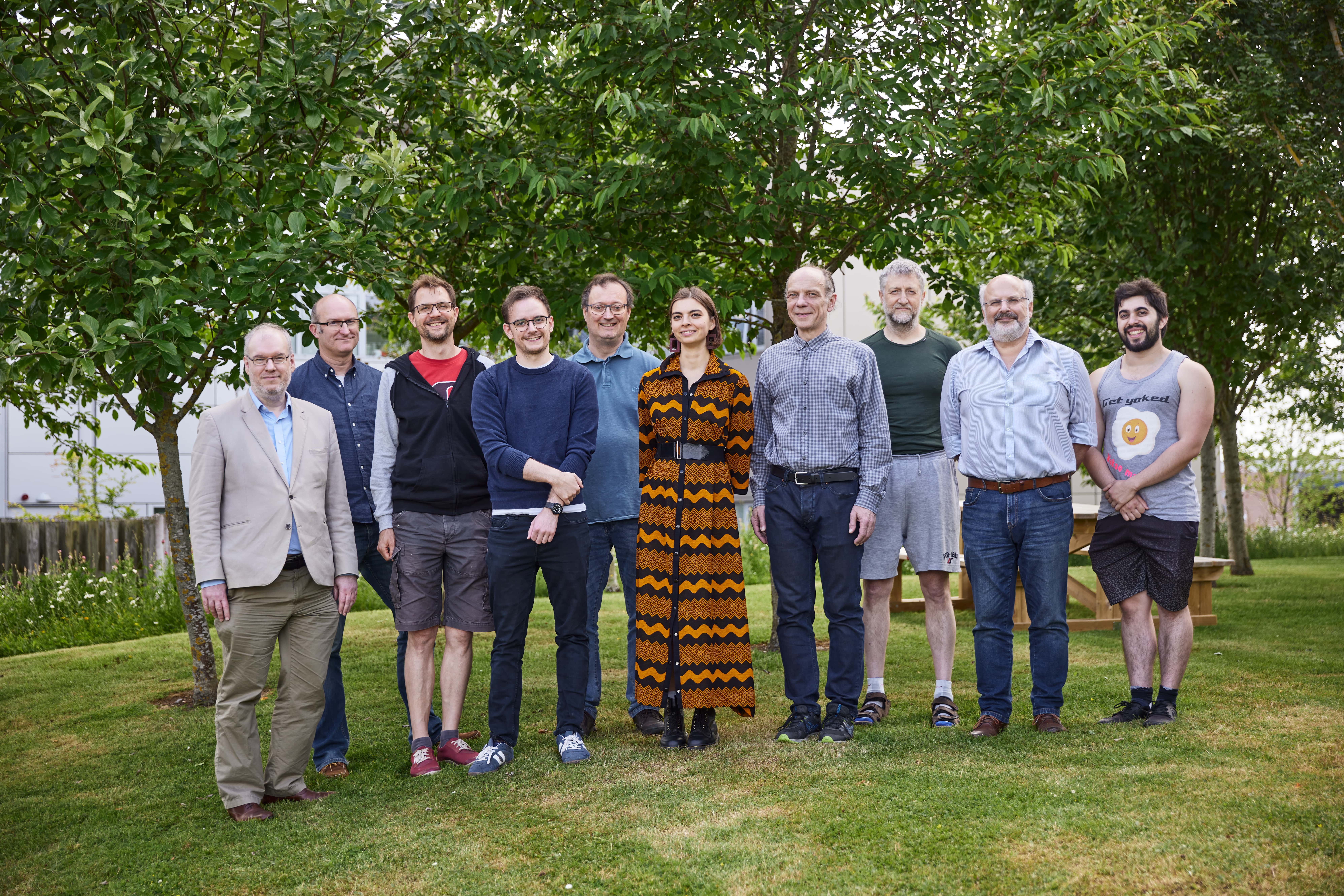Surface Plasmon Resonance
Research Complex at has a Biacore T200 system that exploits the phenomenon of surface plasmon resonance (SPR) to monitor the interaction between molecules in real time.
SPR occurs in thin conducting films at an interface between media of different refractive index. In Biacore systems, the media are the glass of the sensor chip and the sample solution, and the conducting film is a thin layer of gold on the glass sensor chip surface. Under conditions of total internal reflection, light incident on the gold film leaks an evanescent wave field across the glass/solution interface into the sample solution, without losing net energy. At a particular combination of incidence angle and wavelength, plasmons are excited in the gold film. This results in a characteristic absorption of energy via the evanescent wave field and a drop in the intensity of the reflected light, giving rise to a “dark spot” at the SPR angle. Conditions for this resonance effect are very sensitive to the refractive index of the solution within the penetration depth of the evanescent field. Changes in solute concentration at the surface of the sensor chip cause changes in the refractive index of the solution, which alters the SPR angle, and can be measured as an SPR response.
To study molecular interactions, one interacting partner is attached to the surface of a sensor chip and then the other interaction partner is passed over the surface. Binding of molecules to the sensor surface generates a response that is proportional to the bound mass. The association and dissociation of the bound molecules is followed in real time and a range of interaction characteristics can be determined. The technique is applicable to almost any type of molecular interaction from sub-100Da molecules up to whole cells, viruses and nanoparticles, providing high-quality data on binding affinity, kinetics and specificity, as well as concentration measurements based on specific binding activity.
